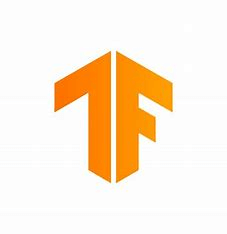Python Tutorial
Python OOPs
Python MySQL
Python MongoDB
Python SQLite
Python Questions
Plotly
Python Tkinter (GUI)
Python Web Blocker
Python MCQ
Related Tutorials
Python Programs
Tensor FlowAn open-source software library for deep learning and machine learning is called TensorFlow. The Google TensorFlow team is currently responsible for maintaining it after the Google Brain team created it. It is used for many different things, including time series forecasting, speech and picture recognition, and natural language processing. TensorFlow's capacity to function on a range of hardware, including CPUs, GPUs, and TPUs, is one of its primary advantages. TensorFlow models may now be easily deployed on both desktops and mobile devices. Additionally, TensorFlow's adaptable design makes it simple to deploy models on a range of hardware setups. 
Additionally, TensorFlow offers several high-level APIs, such Keras and Estimators, that make it simple to create and train machine learning models. These APIs make working with TensorFlow easier to understand for a variety of users, including researchers, engineers, and data scientists. Additionally, TensorFlow has a sizable and vibrant community that supports its growth and offers a variety of user-friendly materials and tutorials. Researchers, engineers, and data scientists from both academia and industry are a part of this group. For many different purposes, TensorFlow is widely utilised in both business and academics. These include time series forecasting, natural language processing, and speech and picture recognition. TensorFlow is used by a number of businesses and institutions, including Google, IBM, Intel, and NASA. Why is Tensorflow so well-liked?Because it is a robust and adaptable open-source machine learning software library, TensorFlow is well-liked. It enables simple computing deployment over a range of hardware, including CPUs, GPUs, and TPUs. Additionally, it has a sizable and vibrant community that actively participates in its growth and offers a variety of user-friendly materials and lessons.TensorFlow is also widely used in business and academics for a broad range of tasks, including time series forecasting, speech and picture recognition, and natural language processing. Applications of Tensorflow:-TensorFlow is a robust and adaptable open-source machine learning and deep learning software framework that may be used for a wide range of applications. The following are some of the most popular applications: Image and video analysis: TensorFlow can be used for tasks such as image classification, object detection, and image segmentation. It can also be used for video analysis tasks such as optical flow and action recognition. Speech and audio processing: TensorFlow can be used for speech recognition, natural language processing, and speech synthesis. It can also be used for audio processing tasks such as music classification and audio denoising. Natural Language Processing: TensorFlow can be used for tasks such as language translation, text generation, sentiment analysis, and text summarization. Time series forecasting: TensorFlow can be used for tasks such as stock market prediction, weather forecasting, and energy consumption prediction. Robotics: TensorFlow can be used for tasks such as robot control, object grasping, and object manipulation. Healthcare: TensorFlow can be used for tasks such as medical image analysis, drug discovery, and disease diagnosis. Gaming and Reinforcement learning: TensorFlow can be used for tasks such as game playing, robotics, and decision-making systems. Ecommerce: TensorFlow can be used for tasks such as product recommendation, customer segmentation, and fraud detection. Features of TensorFlow
In conclusion, TensorFlow is a powerful and flexible open-source software library for machine learning and deep learning. Its ability to run on a variety of platforms, easy-to-use APIs, and large and active community make it a popular choice for a wide range of users and applications.
Next TopicCreate a Python Directory Tree Generator
|
 For Videos Join Our Youtube Channel: Join Now
For Videos Join Our Youtube Channel: Join Now
Feedback
- Send your Feedback to [email protected]
Help Others, Please Share










